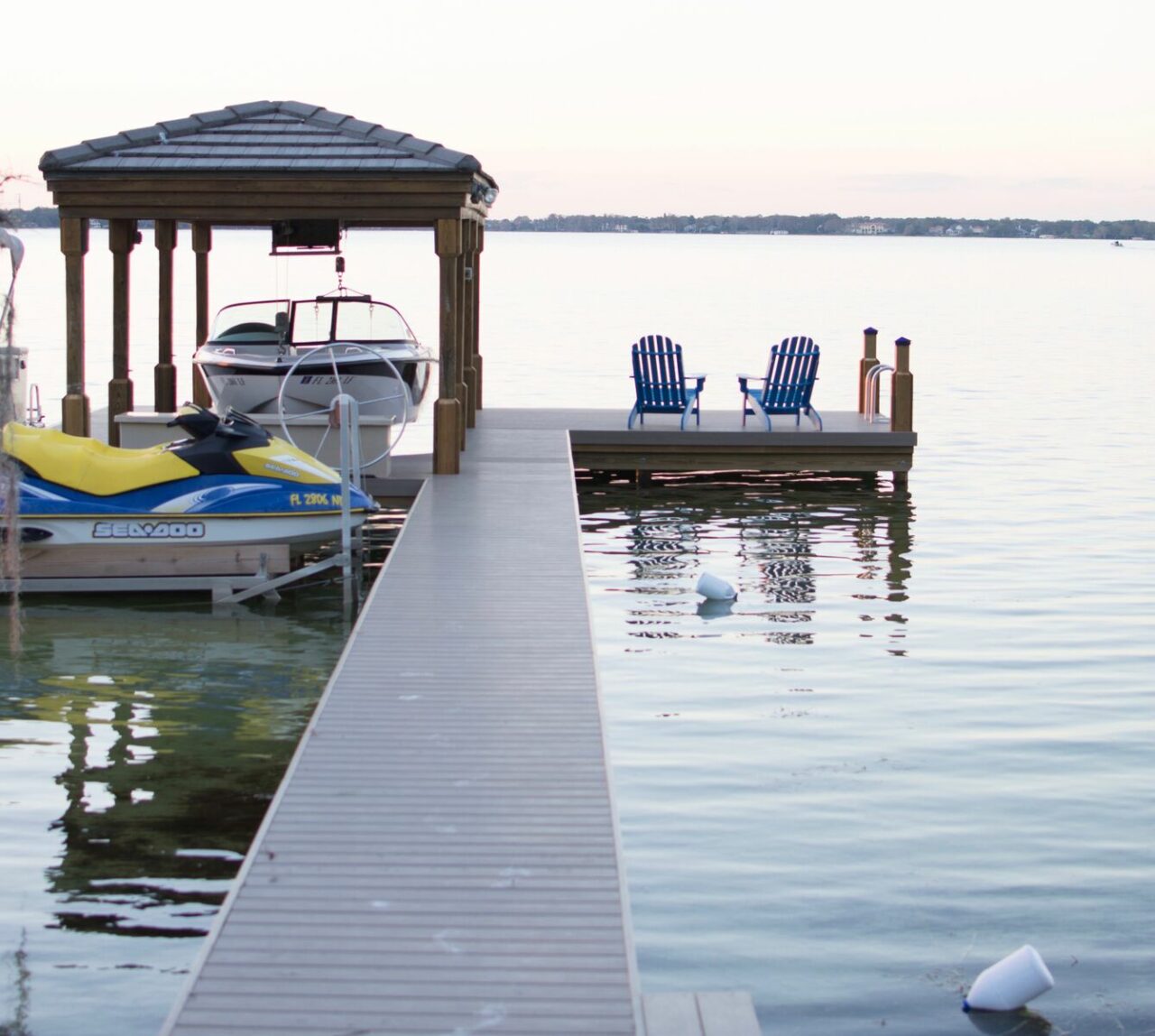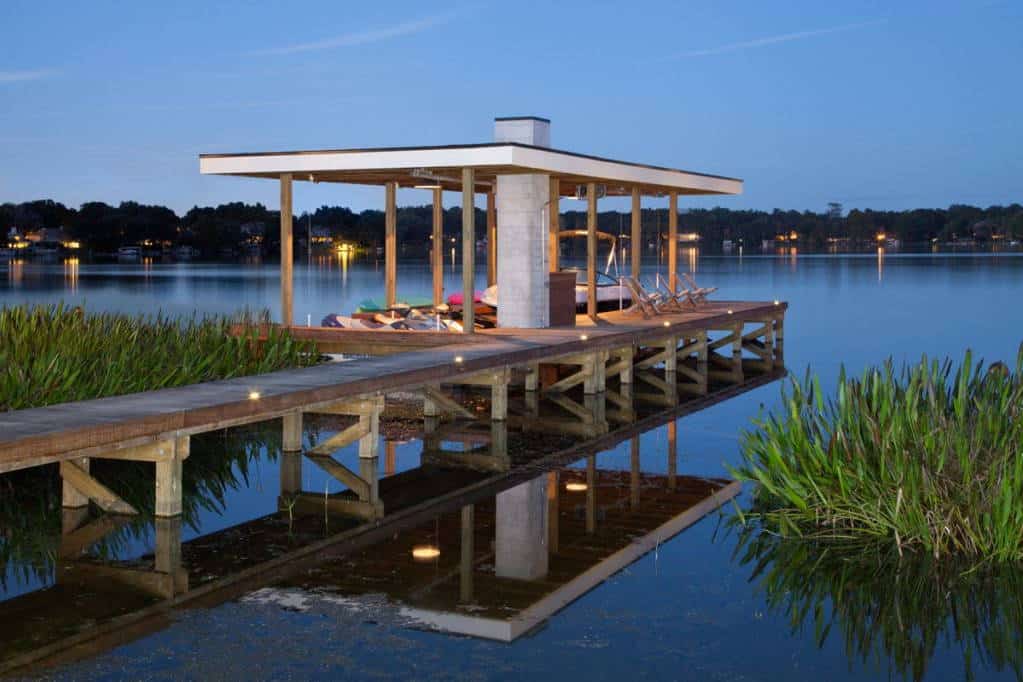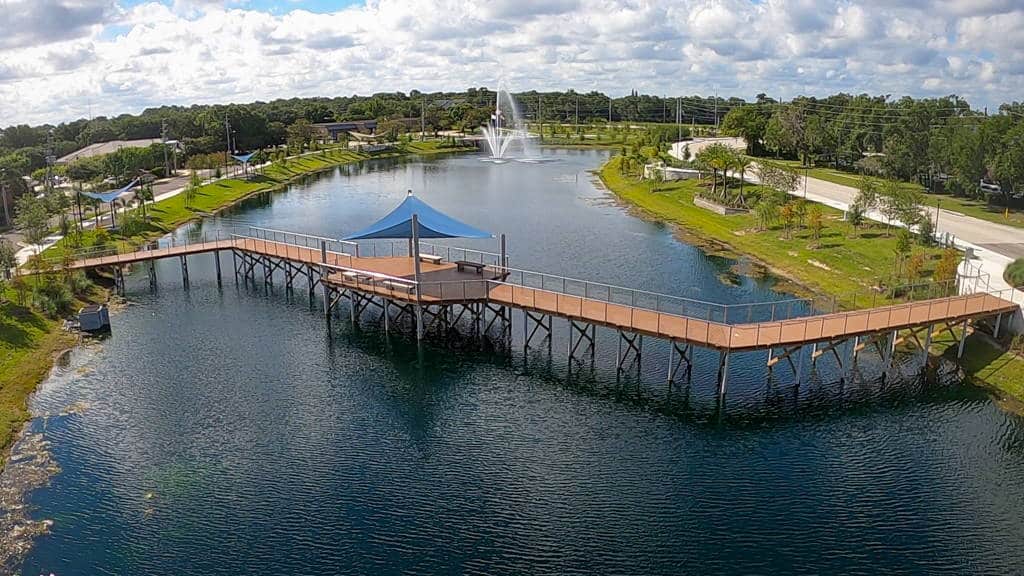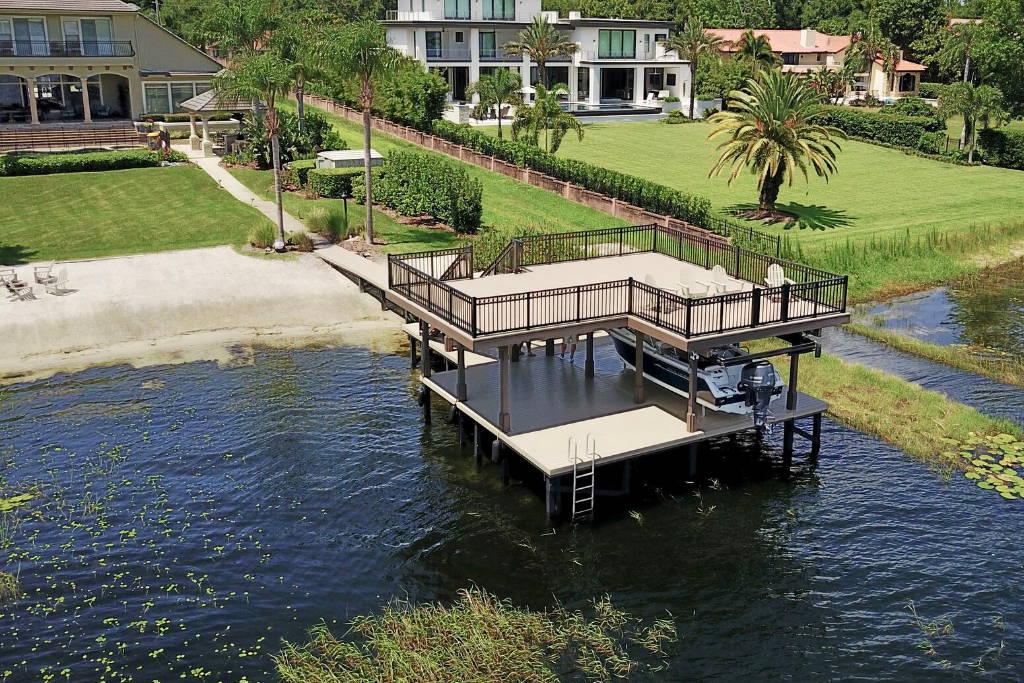Pergolas & Shade Structures
Pergolas and shade structures significantly enhance boat docks‘ functionality, aesthetic appeal, and waterfront features. These structures provide practical benefits such as protection from the sun and elements and contribute to the overall design and enjoyment of waterfront spaces.

How Pergolas and Shade Structures Fit in With Your Waterfront Project
- Blend of Aesthetics: Both pergolas and shade structures can complement the architectural style of boat docks and waterfront facilities, making the area more inviting and enjoyable for visitors.
- Functional Spaces: On waterfront properties or boat docks, these structures can create comfortable areas for relaxation, socializing, or observing the water, enhancing the usability of the space.
- Sun Protection and Comfort: In waterfront settings, exposure to the sun can be intense. Custom pergolas and shade structures offer crucial shade, making the dock or waterfront area more comfortable and usable throughout the day.
- Material Harmony: The materials used in constructing pergolas and shade structures can be chosen to harmonize with those used in boat docks and waterfront facilities.
- Increased Property Value: Adding well-designed pergolas and shade structures can increase the value of a property.
Why Build Pergolas and Shade Structures with Boat Docks and Waterfront Facilities

Pergolas and shade structures, when integrated with boat docks and waterfront facilities, serve a variety of use cases, enhancing functionality, aesthetic appeal, and user experience. Here’s a list of use cases illustrating their versatility:
- Boat Protection: Offering a covered area on the dock for boats, shielding them from direct sunlight, bird droppings, and weather elements, thus prolonging the life of the boat’s upholstery and finishes.
- Recreational Lounging Areas: Creating comfortable seating areas where families, guests, and visitors can relax, enjoy the view, socialize, or spend time outdoors in a shaded, inviting environment.
- Outdoor Dining Spaces: These structures can provide a place for private enjoyment or a commercial setting like a restaurant, where patrons can enjoy meals with a view protected from the direct sun.
- Event Hosting: Providing a picturesque setting for events such as weddings, parties, or corporate gatherings, where guests can enjoy the waterfront ambiance under the shelter of elegantly designed structures.
You Can Trust Q-ICE With Your Shade Structure

Q-ICE Builders stands out in the industry for our exceptional ability to handle complex and challenging shade structures, exemplified by a recent award-winning project designed to enrich public outdoor experiences.
The construction of the shade structure, a shade sail located centrally within the project, presented a unique set of challenges. The design called for installing 10-inch round, 55-foot-tall piles, a task made more daunting by the site’s limitations, including the absence of a boat ramp for easy access.
This restriction eliminated the possibility of utilizing a large crane barge for the pile setting, demanding innovative solutions from the Q-ICE team. The team’s expertise shone through as they skillfully used extensive framework and scaffolding to secure the pilings and frame the structure, ensuring stability and durability despite the challenging elevation.


